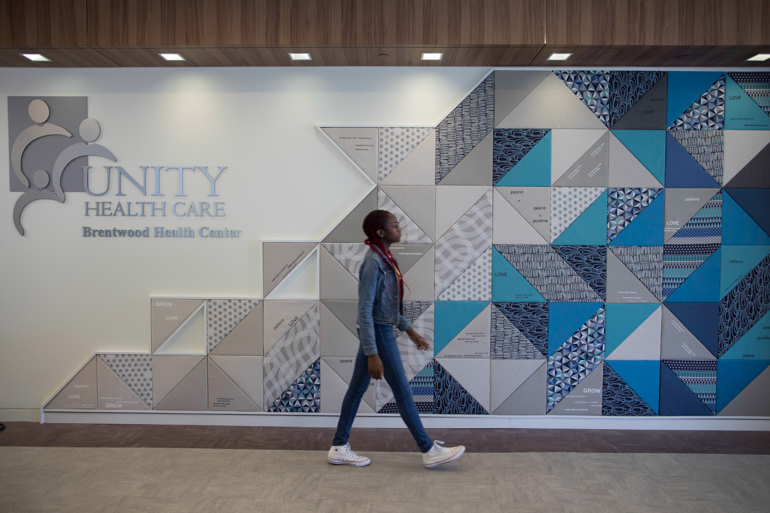Textiles: Thinking Beyond Look and Feel with Sunbrella

Selecting the right fabrics for today’s ever-changing spaces and products is not a task designers and clients take lightly. With so many options, how can just one be confidently selected? With rapidly changing environments and needs, smart textiles are being demanded more and more. As work, health, and hospitality spaces are reacting to advances in mobile technology, the challenge of serving varied age populations, and an increasing understanding of how the aesthetic quality of a space can shape a brand image, gone are the days when every market had clear differences.
Whether trends in individual markets are influencing each other or forces such as a health crisis set the pace, textiles continue to have a role in every environment. Designers specifying fabric for commercial environments often lean on textile manufacturers for guidance however commercial textile brands rely on the Association for Contract Textiles to arm designers with the right products. The ACT sets industry standards that provide voluntary guidelines to create a unified system for evaluating and comparing textiles across a wide range of performance requirements. High performance standards are key to setting up the designer for success, making the right choice for the right application.

From performance standards to foundational facts, Sunbrella Contract knows a certain considerations are key when selecting fabric, positioning the brand as a great source for helping designers understand ACT guidelines. The ACT evaluates and compares textiles across a wide range of performance requirements, including flammability, wet and dry crocking, colorfastness to light, physical properties and abrasion. Sunbrella Contract fabrics have strict standards that not only meet ACT standards, but to go beyond the expectations, and the brand promotes learning more about the intricacies of fabrics – from performance to design.

While the ACT guidelines focus more on the materiality of a fabric – does it pill? How quickly does the fabric burn? Will the pigment transfer to another surface? – Sunbrella works with partners to turn the theoretical into the practical, without ever compromising their design vision. For example, when designing spaces that have very specific requirements, Sunbrella Contract offers their partners a variety of fabric technology solutions. Sunbrella Contract with Defiance inhibits the growth of bacteria and other dangerous micro-organisms using a powerful antimicrobial treatment while Sunbrella Assure, which is durable and has added sustainability benefits, is a fluorine-free performance fabric solution.

Although Sunbrella Contract offers special added features, innovation is at the core of the brand. No matter what the application or the environment, designers can be certain that bleach cleanable, UV and fade resistant and mold and mildew resistant always be a part of their entire offering. In high-traffic areas and those with abundant natural light, durable fabric that won’t fade over time is the practical choice. This fabric passes the ACT’s lightfastness test, plus lives up to Sunbrella’s own stringent colorfastness standards.

Beyond its physical properties, fabric always has a role to play in design, whether it is to take a subtle stand back or make a statement. Fabric will always be a savvy solution to design challenges– it can mitigate sound, stand up to the beating of natural and light, the rigors of heavily used furniture. Today and tomorrow’s challenges may prove to be even tougher in our workspaces, community healthcare environments, and tomorrow’s travels.

If there’s one constant within the world of design, it’s that the industry is ever-changing. To help educate designers on the challenges and opportunities presented when selecting finishes in today’s demanding spaces, Sunbrella Contract offers a Continuing Education Course. All this change and innovation means exciting new visions are possible, and with Sunbrella Contract there never has to be a choice between form and function.



